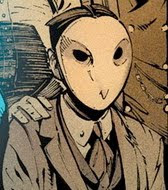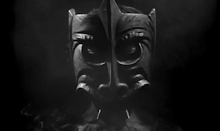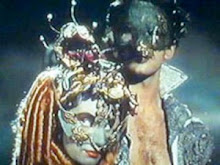The best thing about The Monkey’s Raincoat is how unapologetic it is. It’s been so long since I’ve read a crime novel that wasn’t striving to be a social document first and a page turner second that I almost didn’t recognize it. Once I got into the right mindset The Monkey’s Raincoat was a blast. And if it was a bit more Sue Grafton than Dennis Lehane, well sometimes that’s just what the doctor ordered.
There’s no long opening prologue about how unglamorous Private Eye life really is, that seems requisite for every PI novel published between 1960 and today, no straining for credibility. Just a textured Los Angeles as glamorous as it is dangerous, filled with people in trouble, dames to kill for, rich decadent villains, colorful thuggish muscle, and one damaged romantic man willing to stick out his neck to help and his partner who will drop anyone at anytime.
It’s the sort of book where the hero beds every woman who enters the book and leaves about a dozen corpses in his wake and doesn’t have to so much as appear in court. It may be unrealistic but hey so was Chandler.
Another first in a long running series, James Lee Burke’s The Neon Rain was a fascinating read. I usually hold fast to my rule of not reading books in series that run past ten entries, but Burke might be an exception. Robicheaux is a character who seems well worth following for so long. Robicheaux manages to be noble without being preachy, stoic without being uninteresting. He’s Smart, cool and tortured, as handy with a cool cerebral quip as he is with a shotgun.
Burke is a damn good writer. A quick sure hand with character, and a skill with atmosphere that makes the New Orleans setting come off the page and even has a touch of southern gothic, as proved by the scene where Robicheaux goes drinking with a boxcar full of circus freaks.
If Neon Rain has a problem it’s that it’s not exactly what you would call a model of narrative efficiency. Like many first books it feels more like two novellas stapled together than one coherent narrative. And I’m not sure if the various gears of conspiracy ever line up just the way that Burke thinks they do. Still this is there is a learning curve for this sort of thing and I have a feeling that Burke will improve fairly quickly. All in all it’s a great first novel that left me hungry for more.
Leave it to Jack London to write a book that may as well have been entitled Benders I Have Known. Jack London liked to drink and like all hobbyists he made a thorough record.
In John Barleycorn Jack London drinks. He drinks with fearsome Italians, Gypsies and river pirates. He drinks in the snow he drinks in the sun. He drinks at home and he drinks in the country. He drinks all around the world, Every so often he stops and assures the reader about the woe and misery that drinking has brought into his life. Then he tells an awesome story about this other time he got completely shitfaced hammered.
To mention that the book is dated almost goes without saying. London was certainly a… forceful writer. And at times the experience of John Barleycorn is less that of reading a book as seeing one acted out in pantomime. But this just adds to its charm. I can’t help but think that anyone who has bent the elbow more than is strictly good for them, will have a good time with this one.
Exactly what the title says. A bunch of lists from horror luminaries, everyone from Stephen King to Joey Ramone and a bunch of filler lists from lesser lights. The book does get into the rewardingly obscure, this is not one of those horror books that you finish having learned nothing new about the horror genre, or leave you with nothing new to seek out. Though the nature of the book does mean that the quality of the lists tends to fluctuate. There are rewarding ones, and then ones like Eli Roth’s that leave me deeply worried about them as a person. Basically if you see this one on a bargain table it won’t do you any physical harm.
I was very happy while reading 2030 as it was the first evidence I have received in a long time that Albert Brooks did not actually die shortly after the release of Defending Your Life and was hastily replaced by a sinister robot double bent on ruining his legacy. It may not be as perfect of a work as Modern Romance or Lost In America, but it is recognizably the work of the person who made those films. Which is more than I can say for the rest of Brook’s output for the past twenty years or so.
2030 is a Vonnegutian satire which quite effectively gives the trends of today a nightmare velocity. He skewers the health care crisis, the generation gap, and other varying topics with varying effectiveness. He seems for one thing to have a queerly sunny view on globalization (It seems much more likely that we would inheret Dickensian factories from China rather then a kick ass healthcare system). But on the whole it is a thoroughly effective satire.
Brook’s inexperience as a novelist is detrimental in a couple of places. He stops the narrative in its tracks a few times so he can explore the world he’s created rather then weaving his ideas and concepts into the story (some of these vignettes are quite effective in and of themselves). Some of his plotlines are left dangling, and a few characters remain resolutely two dimensional. Not to mention the fact that various characters, no matter their race color or creed are given to sounding an awful lot like Albert Brooks at any given time (see also Allen, Woody).
Still none of these are debilitating flaws. And on the whole there’s a lot more in 2030 that works then doesn’t. It’s a rewarding work from a man who at his best is one of the greatest comics alive. Even if it is recognizably second tier.
I have a weird relationship with Robert Jordan. Though I respect his work, and the passion his fans have for it, The Wheel Of Time Books have always seemed like a bit of a closed circuit it to me. It’s like watching dudes who are really dedicated to the unicycle and build really fancy tall tricked out ones. I’m impressed, but it seems like an awful lot of effort when there are so many functional bikes just lying around.
Jordan has some awfully strange bad habits as an author, both as a prose stylist and a story teller. Yet, every time I feel like I’m ready to just give up on the books something very cool will happen. And every time said cool events begin to happen in close enough proximity allowing the reader to become impressed by the immensity of Jordan’s vision and let some serious narrative momentum build, something amazingly dumb will happen, or you’ll reach a stretch of prose that’s really tone deaf and just like that you’re outside looking in again. It’s a conundrum.
I doubt I’ll ever give up on reading the series completely. The moments when it works are too good not to give you a bit of a taste for what happens next, But I also doubt I’ll ever be a true believer.
Still it is a damn fine unicycle.
I was wary approaching The Handle. (AKA that Parker book that proved that if you were a pulp writer in the 60’s and your name wasn’t Ian Fleming you were in trouble.) It’s basically a novel in which Parker robs a James Bond Villian. An SS officer with his own private island/casino out in international waters. Richard Stark’s novels are the stuff of bleak midsized industrial cities. They’re the stuff of payroll robberies. Brutal smash and grabs and bodies left in narrow graves. Not the stuff of exotic island casinos.
Well turns out the jokes on me, because The Handle is just as good a read as any of the others. And Stark’s subversive streak is in full effect as he demonstrates just what happens when a James Bond Villain enters Parker’s world.
From what I understand it’s business as usual after this and I can’t say I’m sorry. But as a one off, it’s pretty damn good read.
In A Narrow Grave was Larry McMurtry’s first book of essays. I’ve grown to appreciate McMurtry’s nonfiction more and more, as he has kept more of his talent in that area than in others. But part of what makes In A Narrow Grave such a good read is that McMurtry’s talent is so fresh and McMurtry himself is so evidently pleased with it. Which sadly would not always be true.
He’s a spry essayist switching between topics and tones at will. His essay on the then new Houston Astrodome is perhaps the funniest thing that the usually laconic McMurtry has written, the fact that it sits directly next to some moving elegies makes it all the more impressive. If he occasionally drifts into TMI (He really wants you to know that he didn’t make up the animal fucking scenes in The Last Picture Show).
The title says it all, it’s a book about Larry McMurtry talking about Texas. Your enjoyment of it will relate directly to how much care you can muster about either subject. But for those who have any interest in either the book will prove time well spent.





























































































